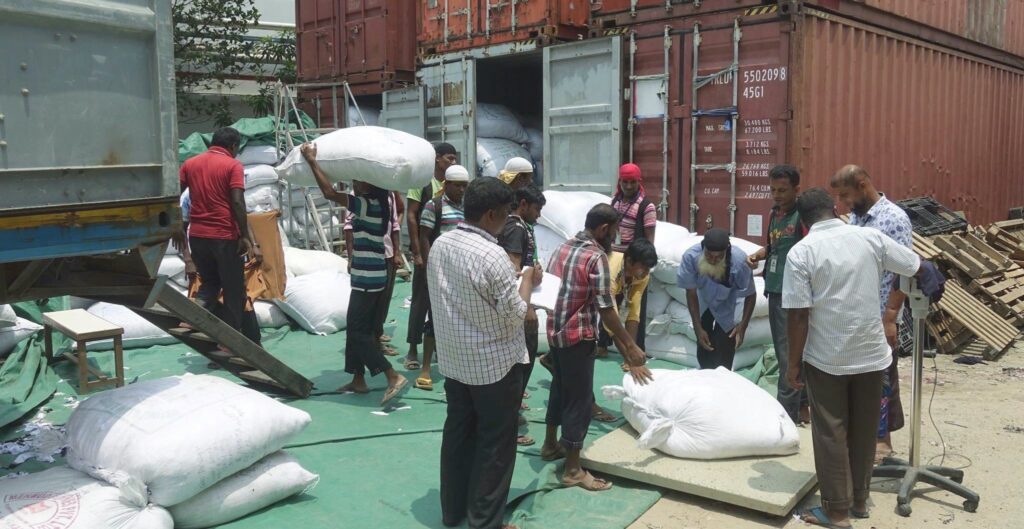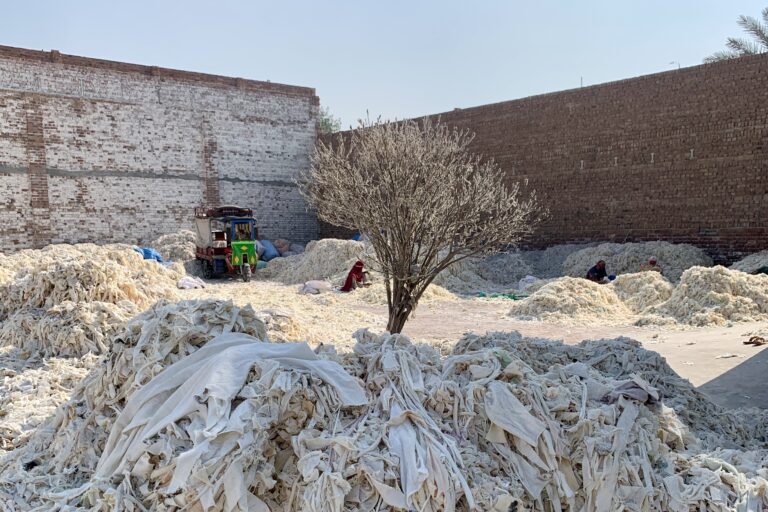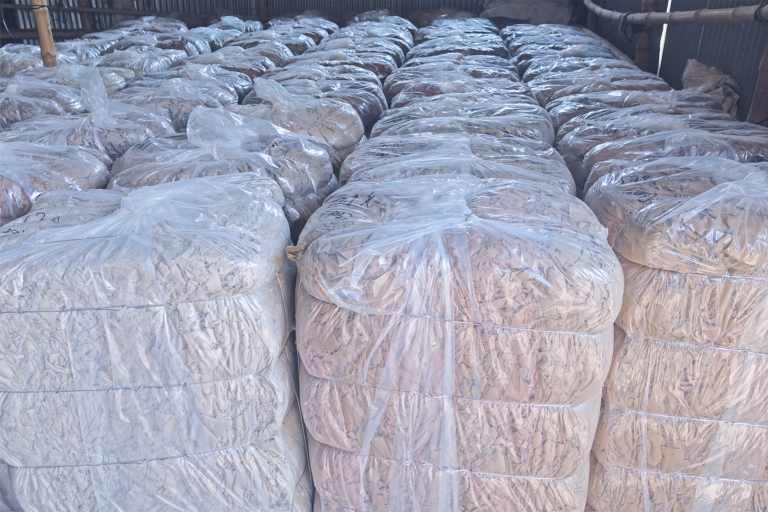We have been running the numbers and making calculations on how leftovers in the form of roll end pieces can be used again in new purchase orders. What are the cost savings, and the viability of doing this in large scale production. Until recently we had only proven the concept in theory. We were able to run a full remanufacturing trial with an actual production purchase order. Last month the first ever remanufactured garments were shipped and sold in shops across Europe. As a result of the trial, the brand confirmed 2% cost savings. The factory reported new fabric savings and we were happy to witness that production efficiency did not go down with the slight process modifications that our remanufacturing concept requires.
But our goal is wider and larger than remanufacturing – with the growing recycling market and new technologies being scaled it is vital that we have a system to connect and improve the trading process between garment factories/mills and recycling facilities. Our second trial was to validate that increased market transparency and segregation of leftovers on site in garment factory/mill brings increased revenue for both the factory and recycler. The trial was conducted with our excellent recycling partner
. Through the trial they were able to source high quality leftovers for their production directly from factories with full fabric background information thanks to Reverse Resources. Demonstrating savings, and a reduction in lead times. On the other side, the garment factory also confirmed that their revenue for the leftovers increased by $0.2/kg compared to selling them in bulk to the local trading system.
The research we have done on fibre recycling technologies and facilities has shown that the current trading system is costly, inefficient and wasteful. It is difficult to source leftovers efficiently due to lack of information of what is available. We have mapped and interviewed all the stakeholders within the circular supply chain, new technologies which are just entering the market with their first industrial plants, existing recycling companies and textile scrap traders. Lack of market information is currently holding each stakeholder back and with the predicted boom in fibre-to-fibre recycling in the near future it is vital that we avoid these inefficiencies and the inflated costs associated with them.
As such we are happy to announce the launch of our recycling solution to solve this visibility problem – on October 1st first trials with the new software solution are planned to start.
Another exciting news is that our team has expanded. This summer
joined our team as the CTO, taking care of our product development and technical platform development.
Throughout the months we have received amazing support and help from several organizations. We participated in
an accelerator that unites several major fashion brands (Kering Group, PVH, Adidas, and others) with emerging technologies working to create a sustainable fashion industry. We are very thankful for the opportunity to expand our network among forward thinking brands and look forward to announcing projects with some of the FFG brands shortly. We also had an amazing experience at the
this summer where we set the basis for another possible trial to be started.
The most recent news is that we have been chosen to top 5 contestants at
Postcode Lottery Green Challenge
, the final round takes place on September 13 in Amsterdam.
This was a brief overview of the past 6 months. We are looking forward to announcing more good news, launching the recycling visibility solution and moving on with research on new target markets. We will be back with more detailed updates shortly and exciting times are waiting for us – and the circular economy as a whole.




